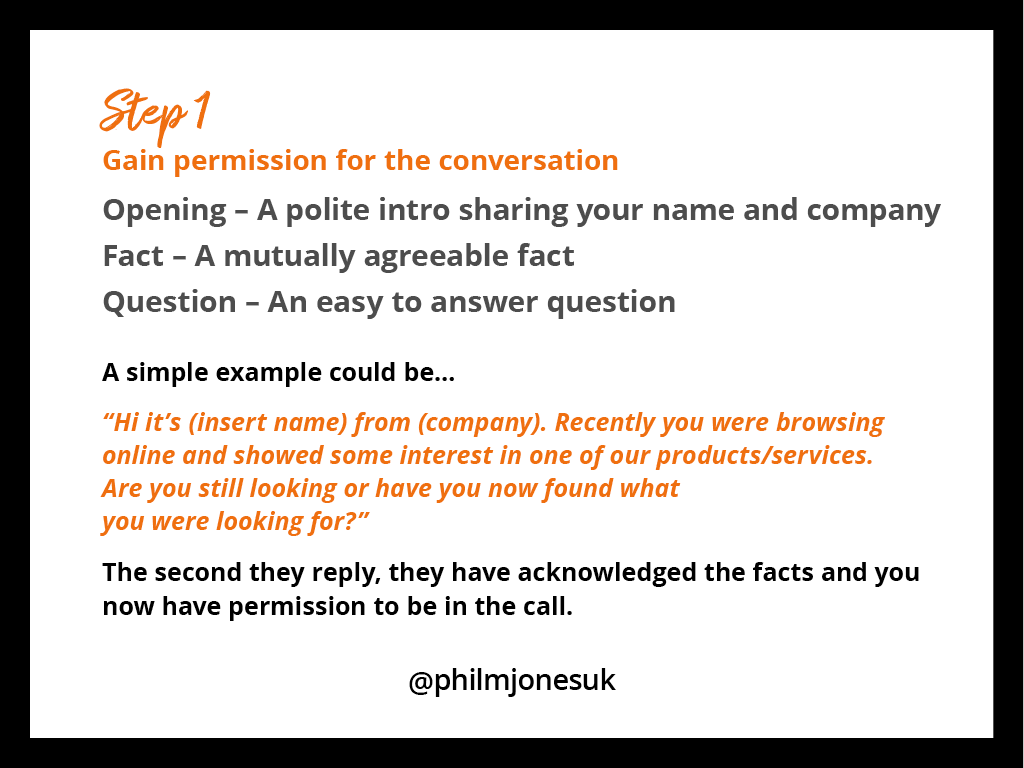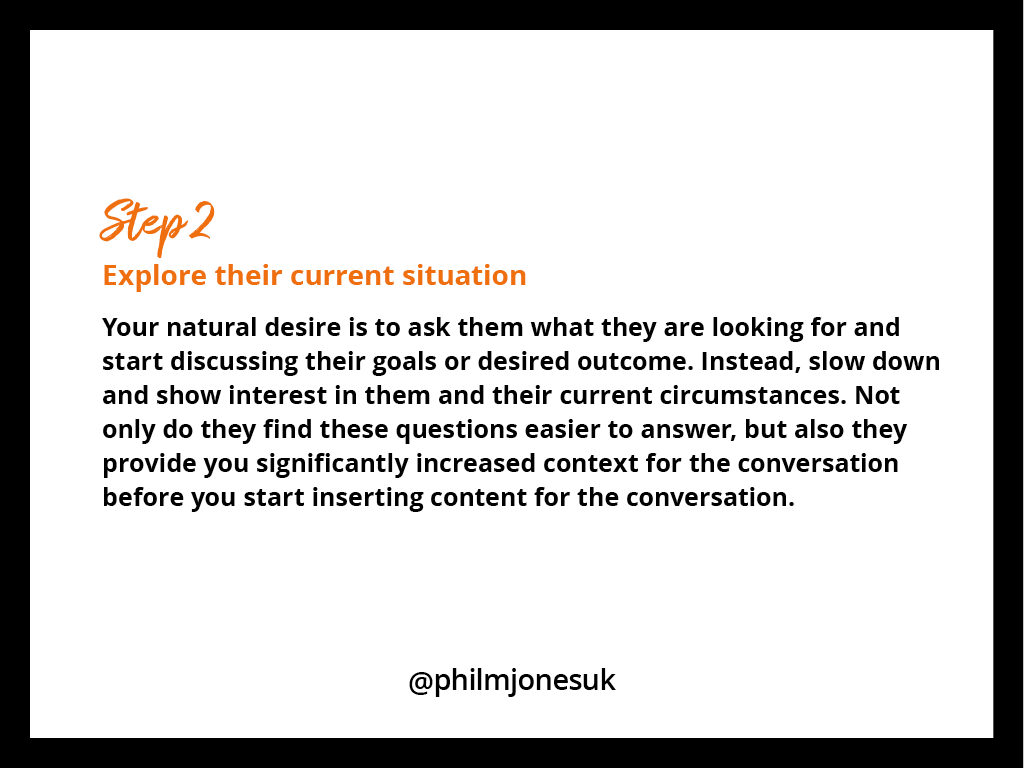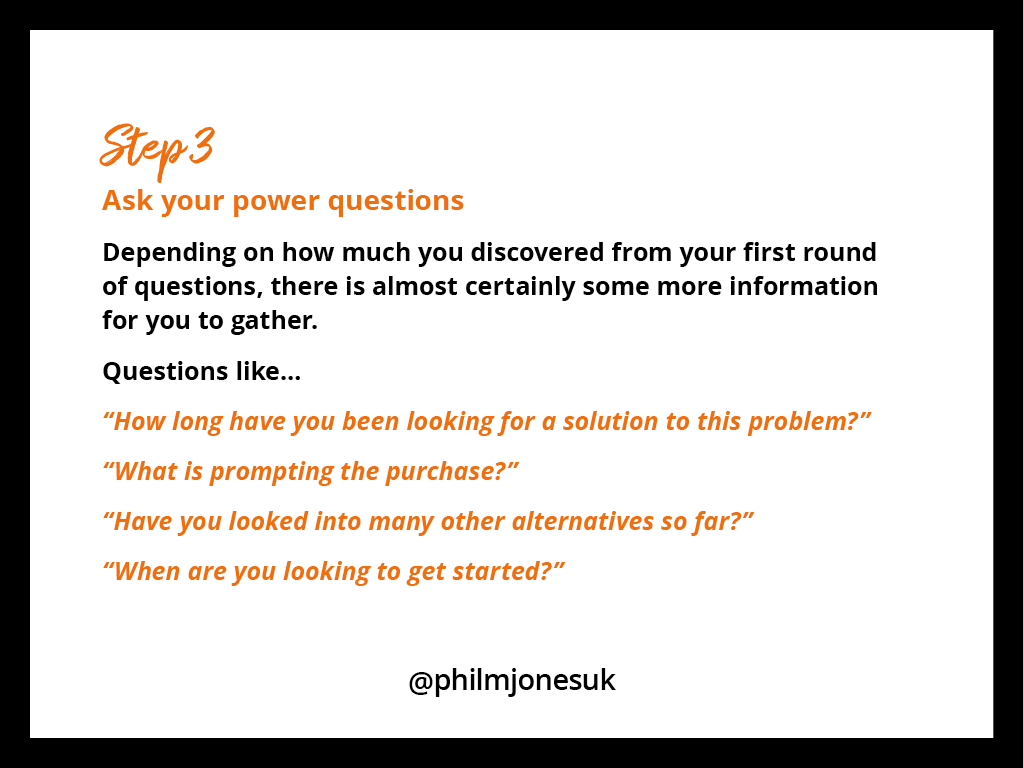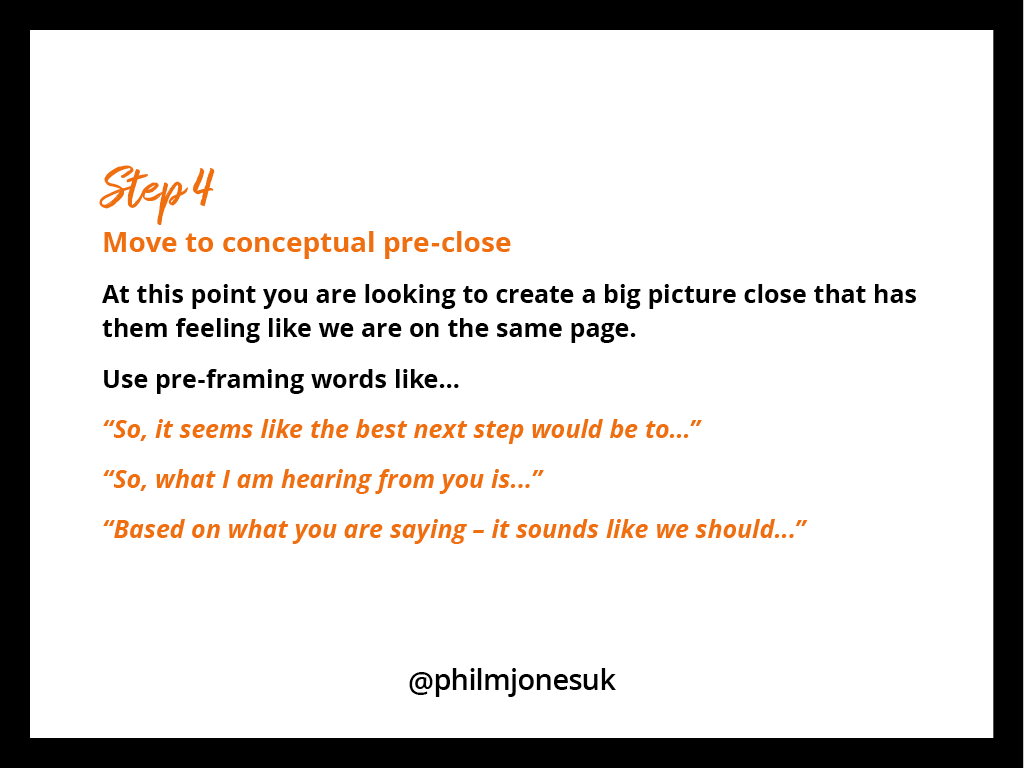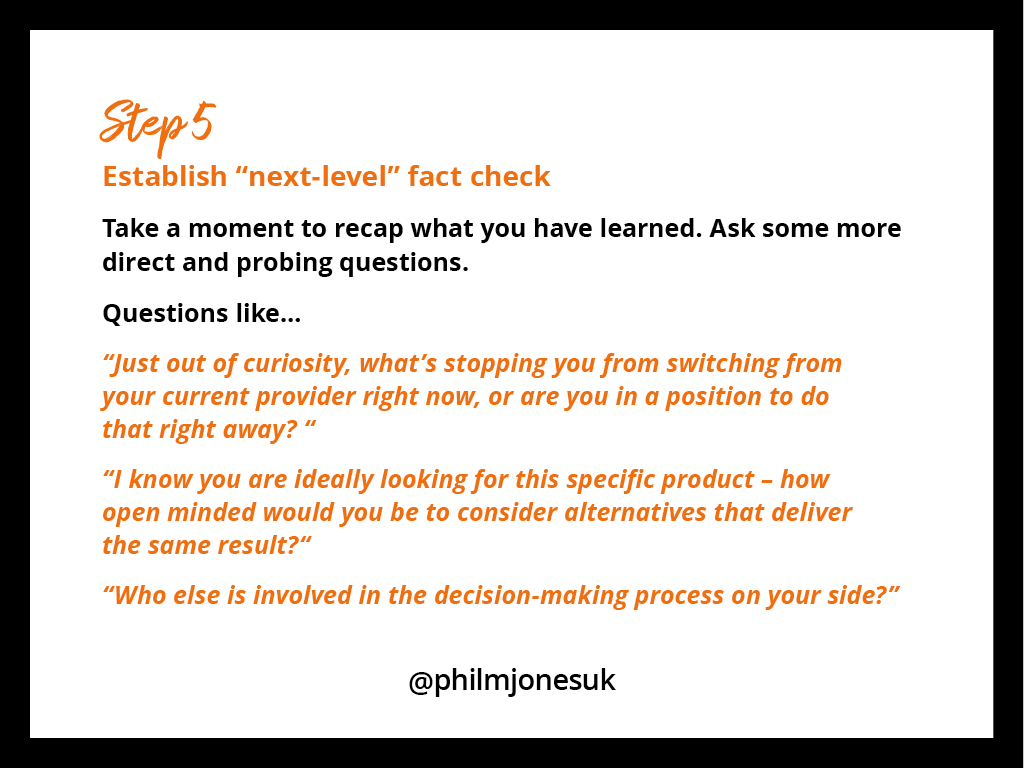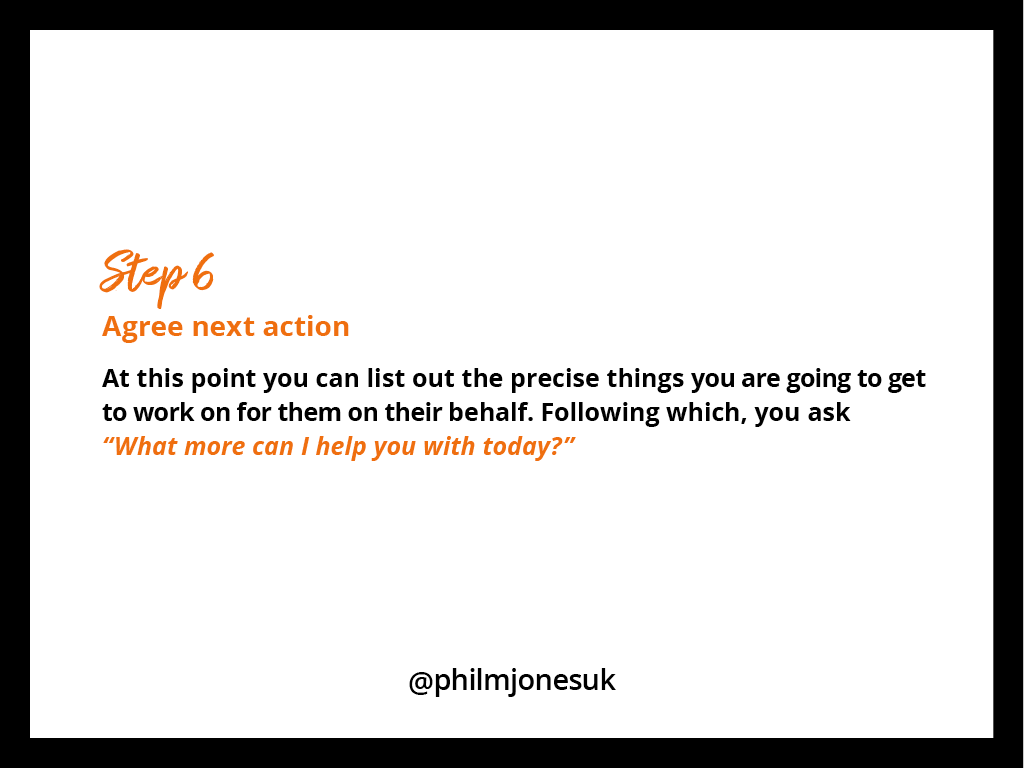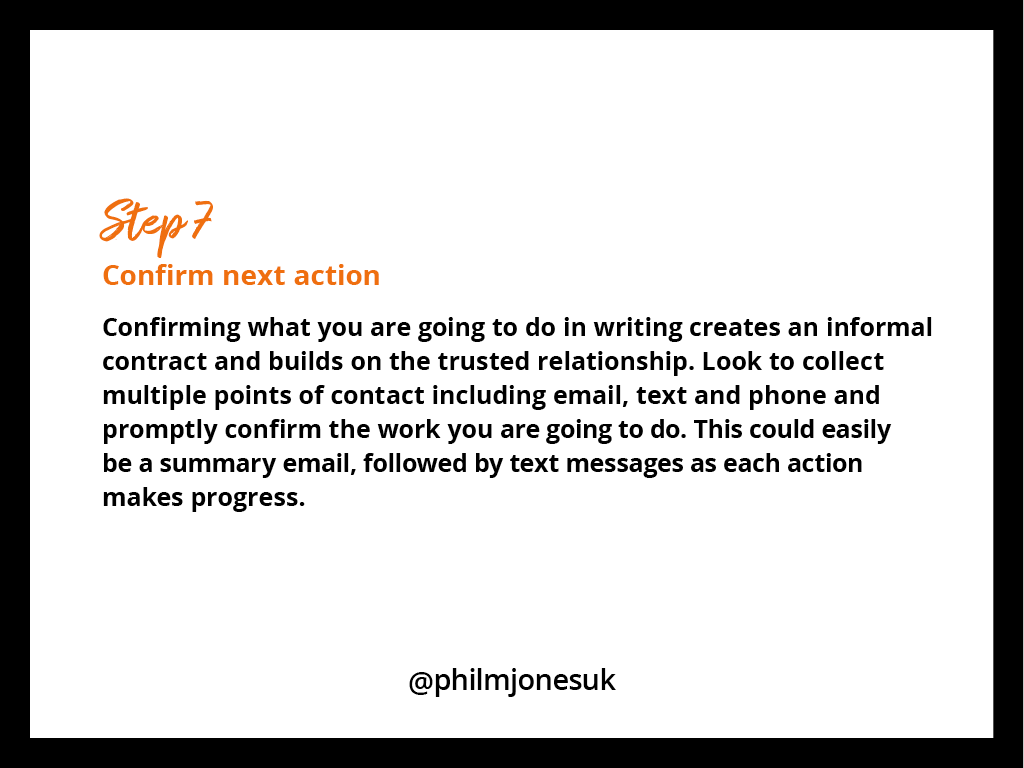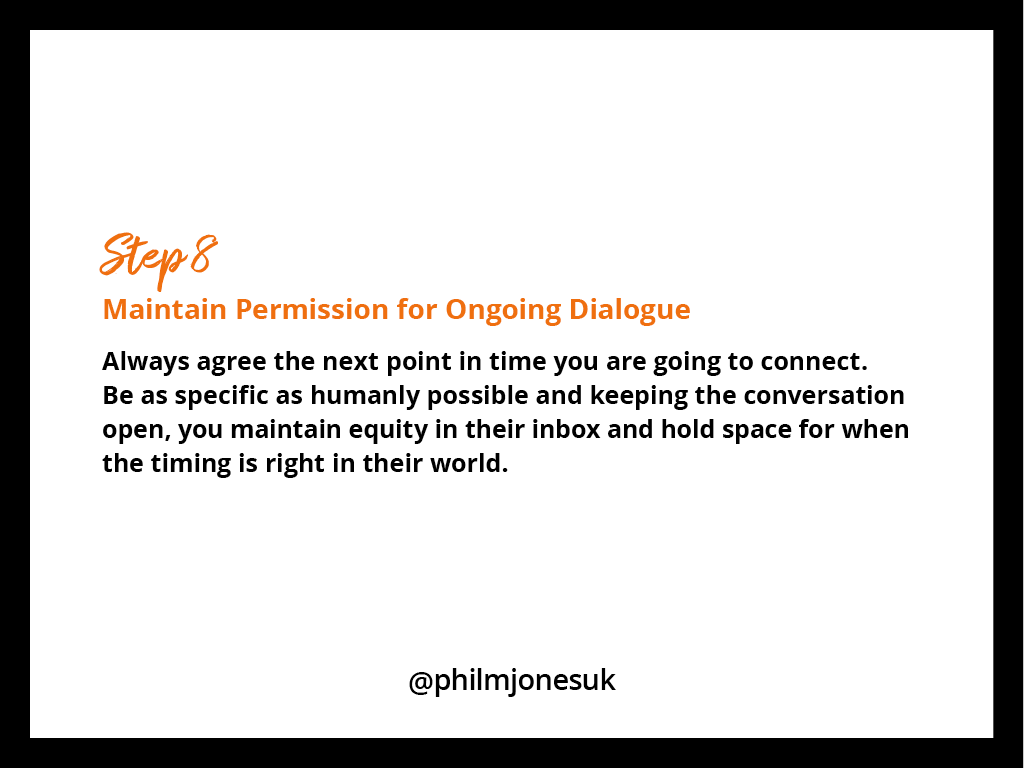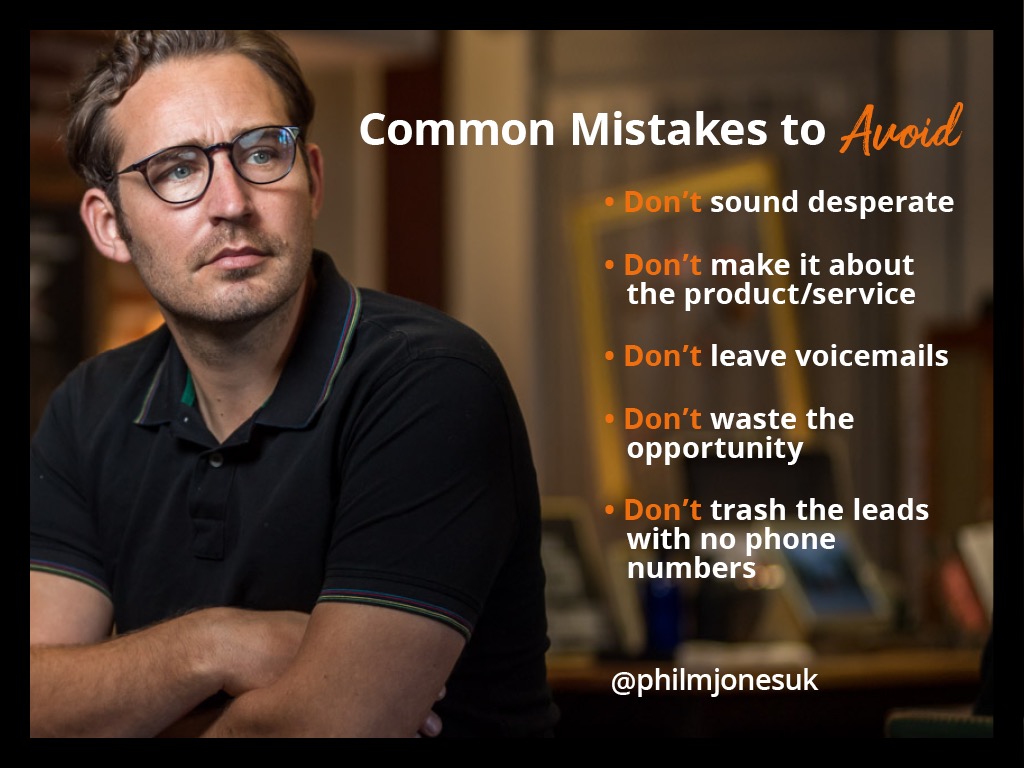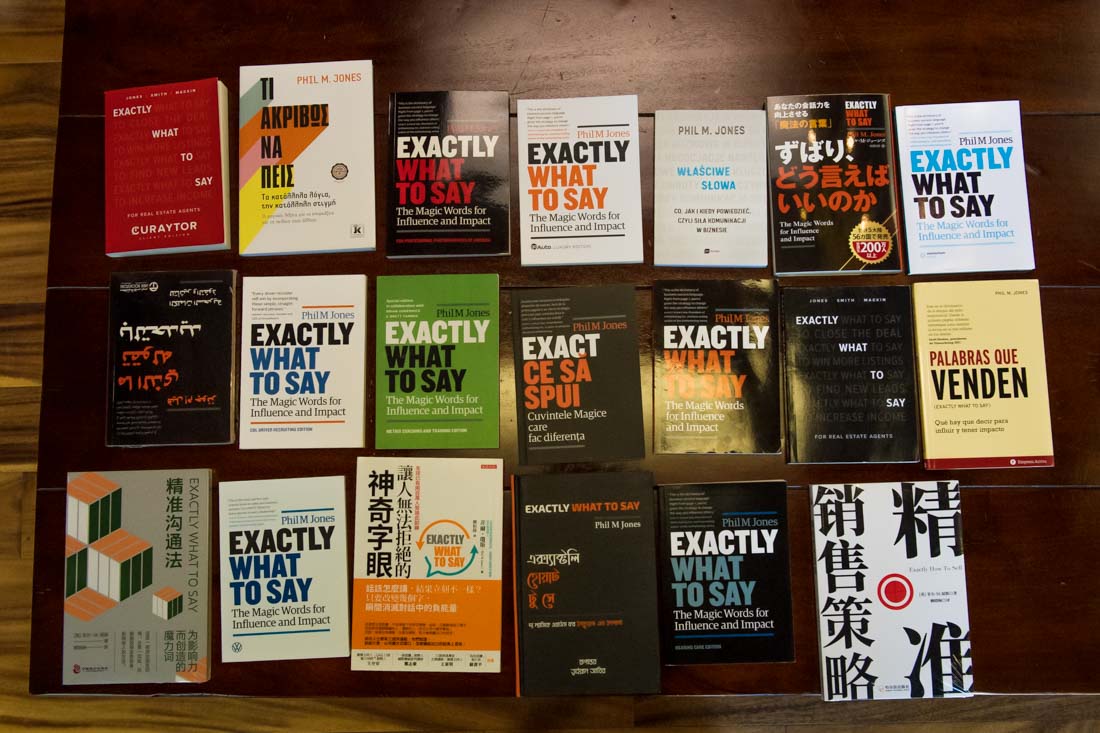An internet lead is different from someone directly inquiring about your product or service. Perhaps they have responded to an online advert, completed a contact form or they have simply been engaging with your website or emails. The fact of the matter is that they have “flirted” with you and not directly requested your specific input. Put simply, they have shown interest in a transaction and not intent. Connecting with these people requires a more human-centric, consultative and soft approach than most salespeople naturally demonstrate. A lead of this nature is your chance to show how you are different and to win a relationship that has the potential of delivering a significant lifetime value of transactions.
Step 1: Gain permission for the conversation
The reality of calling someone following a capture of their details online is that the call is unexpected, an interruption to their day and without complete permission. Yes, they submitted their details and provided implied permission, yet still the call is coming at a unannounced time from an unknown person. Respect all of these facts and start the call confidently and professionally with an OFQ.
Opening – A polite intro sharing your name and company
Fact – A mutually agreeable fact
Question – An easy to answer question
A simple example could be…
“Hi it’s (insert name) from (company). Recently you were browsing online and showed some interest in one of our products/services. Are you still looking or have you now found what you were looking for?”
The second they reply, they have acknowledged the facts and you now have permission to be in the call.
Step 2: Explore their current situation
Your natural desire is to ask them what they are looking for and start discussing their goals or desired outcome. Instead, slow down and show interest in them and their current circumstances. Not only do they find these questions easier to answer, but also they provide you significantly increased context for the conversation before you start inserting content for the conversation.
Step 3: Ask your power questions
Depending on how much you discovered from your first round of questions, there is almost certainly some more information for you to gather.
Questions like….
“How long have you been looking for a solution to this problem?”
“What is prompting the purchase?”
“Have you looked into many other alternatives so far?”
“When are you looking to get started?”
All provide you with additional information for you to make your next set of recommendations from.
Step 4: Move to conceptual pre-close
At this point you are looking to create a big picture close that has them feeling like we are on the same page.
Use pre-framing words like…
“So, it seems like the best next step would be to…”
“So, what I am hearing from you is….”
“Based on what you are saying – it sounds like we should….”
With the goal of getting an agreement that what should now happen is that we do one of the following…
• Schedule an in person or online appointment
• Send them some specific product information for further consideration
• Share with them some further information about a specific product or service
Now that you have been helpful, you can hunt for some more details.
Step 5: Establish “next-level” fact check
Take a moment to recap what you have learned. Having recapped, you can ask some more direct and probing questions that help you explore any points of friction, potential future barriers or help identify potential areas to compromise.
Questions like…
- Just out of curiosity, what’s stopping you from switching from your current provider right now, or are you in a position to do that right away?
- I know you are ideally looking for this specific product – how open minded would you be to consider alternatives that deliver the same result?
- Who else is involved in the decision-making process on your side?
- Would it help if I sent you over some testimonials from some of our clients who were in a similar position to you when they began working with us?
Step 6: Agree next action
At this point you can list out the precise things you are going to get to work on for them on their behalf. Following which, you ask “What more can I help you with today?”
Step 7: Confirm next action
Confirming what you are going to do in writing creates an informal contract and builds on the trusted relationship. Look to collect multiple points of contact including email, text and phone and promptly confirm the work you are going to do. This could easily be a summary email, followed by text messages as each action makes progress.
Step 8: Maintain Permission for Ongoing Dialogue
Always agree the next point in time you are going to connect. Be as specific as humanly possible and keeping the conversation open, you maintain equity in their inbox and hold space for when the timing is right in their world.
Common Mistakes to Avoid
Don’t sound desperate – Your goal is to be helpful and not to offer to be helpful. Avoid “checking in”, ”following up” and “touching base” in your openings. Be purposeful, direct and in service of the other person.
Don’t make it about the product/service – Keep the focus on the person, their needs, why the purchase or switch to your service is happening and what they hope to achieve from it. Failing to be clear on those results will have you lost from the very start.
Don’t leave voicemails – The second you leave a voicemail, you gift full control of the conversation to the other person. Instead, if they don’t answer the phone, hang up and make another attempt to call at another time. Try at least 5 times, on different days and at different times of day before you consider leaving a message.
Don’t waste the opportunity – The value in the conversation is the moment to start building a relationship. Instead of processing them like a piece of data, speak with them like they are a real friend with a real set of circumstances they are looking to change.
Don’t trash the leads with no phone numbers – Sure, you and I both wish that everyone left a perfect phone number. Some people make mistakes when completing forms, some people purposefully create this error because they don’t want a phone call. Assume they made the error unwittingly, send them an email or video message by email and let them know that you tried to call but the number seems incorrect, allow them to save face and invite them to reply sharing more about their circumstances and preferred method of communication.

